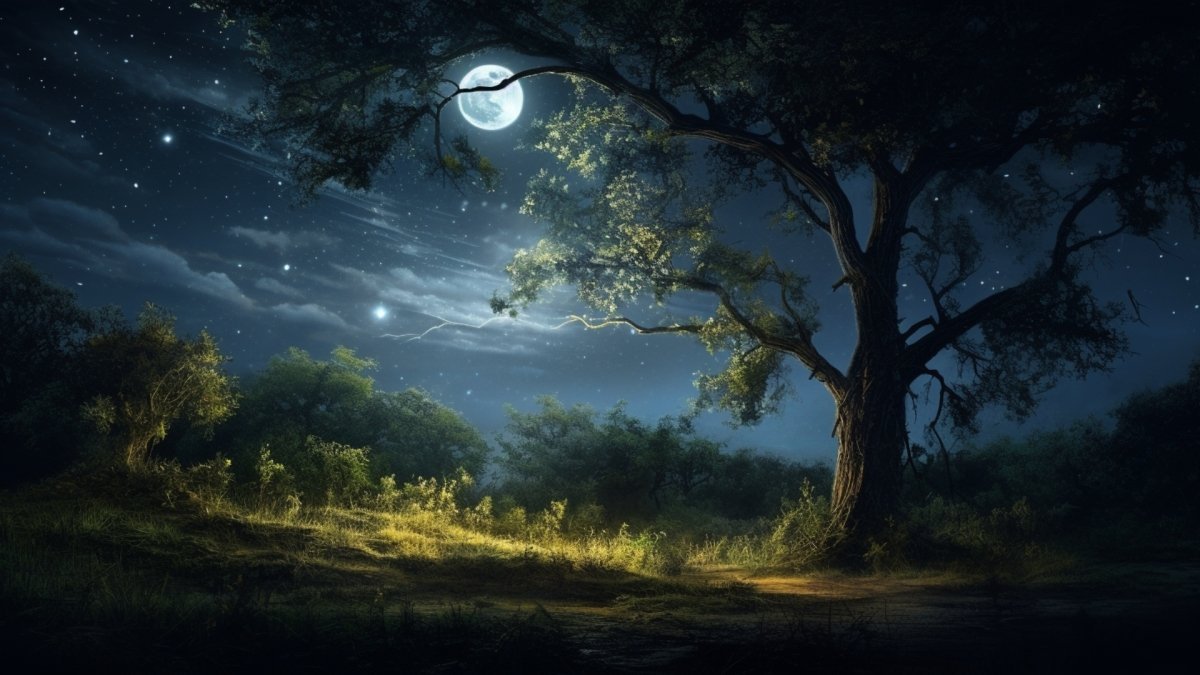
The Moon Is Beautiful, Isn't It? Meaning & Reflection of Love
"Even in the silence of the night, the moon whispers tales of love and life, casting a glow on the unspoken words of our hearts." - Bayu Prihandito
Table of Contents
Key Takeaways
- The phrase "The Moon Is Beautiful Isn't It" encompasses cultural richness, conveying deep emotions and acting as an indirect expression of love, particularly in Japanese culture.
- Social media has adopted the moon's symbol to signify serenity, with the moon trend reflecting our digital vernacular and the innate beauty of celestial bodies.
- The moon serves as a universal connector, fostering shared human experiences and emotions across different cultures and societies.
An ancient lunar phrase captures our wonder and intrigue. "The Moon Is Beautiful, Isn't It?" - doesn't just reflect the skies but illuminates the hidden depths of human emotion and connection. Navigating through languages and cultural cosmos, this seemingly simple observation holds a universe of meaning.

The Enigma of "The Moon Is Beautiful Isn't It"
When you gaze at the night sky, have you ever let slip a sigh and said, "The Moon Is Beautiful Isn't It"? Across cultures, this luminary object has been a source of endless beauty, mystery, and inspiration. But why does this celestial body, a mere rock orbiting Earth, invoke such a profound response within us?
Let’s trace back to a time when moonlit nights were for serenades beneath balconies. It is in Japan, however, where these five words are not just an observation but a longing, a more poetic way of expressing love. Historically, the phrase "Tsuki ga kirei desu ne," which translates to "The Moon Is Beautiful Isn't It," is said to be a subtle and emotional way of confessing one’s love, credited to the novelist Natsume Soseki who proposed using this expression instead of any direct declaration of love.
- The moon is a symbol of purity and calm in the tumultuous sea of life.
- People everywhere are entranced by the moon's glow, which has appeared in countless poems and songs.
- The moon's lovely against the darkness is akin to a beacon for the heart as if reassuring us that beauty exists amid the void.
Indeed, countless tales and scientific studies reveal our innate attraction to the moon. As neuroaesthetics suggests, beauty often elicits a strong neurological response—our brains are wired to appreciate the harmony, balance, and subtlety that the moon represents. Whether it’s a sliver of silver or a glowing orb, isn’t the moon's sheer persistence in the heavens enough to make you pause and admire its silent spectacle?
In a world where the beauty of nature tends to get lost in the hustle of life, the moon serves as a universal reminder—a shared experience that transcends languages and connects souls. And when someone whispers, "The Moon Is Beautiful Isn't It," so often, what they are saying is, "Look at this moment of peace I am sharing with you."
The Moon Is Beautiful, But What Are We Really Saying?
"The Moon Is Beautiful Isn't It" often escapes our lips, but what symphony of emotions are we orchestrating with these words? In the simplest sense, it's an acknowledgement of nature’s splendor, a shared validation between the beholder and observer. Yet, the moon's allure isn't only about its silver beams; it's a metaphor, a linguistic vessel, channeling deeper human experiences and connections.
In particular, the Japanese expression, a more poetic way of saying "I love you," reveals the layers of tradition and subtlety in the way feelings are communicated. Cultural nuances dictate that emotions are often conveyed implicitly, and this phrase stands as evidence of the elegantly understated manner through which people in Japanese society express love. The silence between the words, the expectation set by the stroke of midnight—isn't that where the true meaning unfolds?
| Expression | Meaning |
|---|---|
| "The Moon Is Beautiful Isn't It" | More than acknowledging the beauty, it's an intimate moment shared. |
| Lunar metaphors | Often represent purity, longing, and the unattainable. |
| Cultural subtlety | Conveys emotional depth without being overt or direct. |
Perhaps, next time this phrase floats through the cool night air, it's worth pondering the sentiments it's cloaking.
Could this be more than just a passive observation, but rather an intimate bond connecting two souls enjoying the beauty of the same moonlit sky?
Moonrise on Social Media: Deciphering the Moon Trend
In recent years, "The Moon Is Beautiful Isn't It" has taken on a new life, shining on our smartphones. Social media, where symbols often carry weighty significance, has embraced the moon through various icons and emojis. On Instagram, you might have noticed a crescent moon next to someone's name, but what does that lunar symbol signify?
This little moon can indicate 'Do Not Disturb' mode, representing a person's choice to silence notifications and perhaps symbolically, to bask in quiet moments of life—perhaps in the very glow of natural moonlight. Beyond this functional use, the moon on social profiles can also be a nod to the user's love for nighttime, tranquility, or even a reference to this captivating lunar trend.
- As a symbol of serenity, it’s no wonder that the moon icon is tapped to illustrate a restful break from the constant buzz of notifications.
- Isn't it alluring how the mention of the moon immediately conjures images of a softer, quieter world?
- The moon's impact on visual language online is a testament to its ingrained beauty in our collective consciousness.
But there's more at play. We also use moon emojis in our messages and captions, bathe our photographs in lunar filters, and curate moonlit aesthetics that speak of our innermost yearnings and peaceful escapades. It's a worldwide salute to the celestial, mixed into the social soup of our yearning for connection.

Reflecting Lunar Love: How People Around the World Respond
From every corner of our world, individuals lift their eyes to the night's canvas, mesmerized by the lunar charm. "The Moon Is Beautiful Isn't It"—words universally understood, capture the common human experience, transcending borders and beliefs. Each culture adds a unique tint to the moon's allure.
For me, connecting with clients and friends from diverse backgrounds, it’s like a celestial bond we all share, often leading to heartfelt conversations and an understanding that, indeed, we all live under the same moon.
- In Brazil, the moon sparks celebrations during 'Festa Junina', as people dance under its glow.
- In the Middle East, the crescent moon marks significant festivities.
Here’s how cultures across continents have nurtured a bond with the moon:
| Culture | Moon | Appreciation |
|---|---|---|
| Japanese | Lover's Companion | Poetic phrases of love |
| Western | Inspirational Muse | Songs and stories |
| Islamic | Religious Symbol | Festivities and Calendars |
| Native American | Spiritual Guide | Myths and legends |
Final Thoughts
The moon's radiance has long been a beacon, uniting us beneath its gentle gaze with the simple phrase, "The Moon Is Beautiful Isn't It". Delving into the beauty of the moon reminds us of the beauty within each other, uniting us across the tapestry of time, space, and love.
Frequently Asked Questions
What does it mean to say the moon is beautiful, isn't it?
Saying "The Moon Is Beautiful Isn't It" often extends beyond appreciating lunar aesthetics, serving as an emotional metaphor, especially in the Japanese context where it is a more poetic way of expressing love.
How do you respond to the moon is beautiful, isn't it?
Responding to this phrase could vary from sharing a similar sentiment about the moon's beauty to understanding it as an intimate moment of connection or an expression of love.
What does the moon icon next to someone's name on Instagram mean?
The moon icon next to someone's name on Instagram typically indicates that the user has silenced their notifications, often symbolizing a desire for peace or a love for the nighttime.
Why is the moon so beautiful?
The moon's beauty is often attributed to its calming presence in the night sky, the way it reflects light, and the emotional meanings humans have associated with it over time.
How do you express the beauty of the moon?
The beauty of the moon can be expressed through language, art, photography, and sharing moments of lunar observation with others, often invoking feelings of wonder and tranquility.









